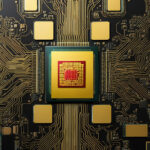US Marine Corps Revolutionizes Logistics with Unmanned Surface Vessels in the Indo-Pacific
The U.S. Marine Corps is deploying unmanned surface vessels to Japan to streamline logistics across the vast expanse of the Indo-Pacific region. This innovative move marks a significant shift in how the military approaches supply chain management and underscores the growing importance of autonomous technologies in modern warfare.
By harnessing the power of unmanned surface vessels, the Marine Corps aims to enhance its operational efficiency and agility in the region. These cutting-edge vessels are equipped with advanced navigation systems, sensors, and communication technologies, allowing them to autonomously navigate the waters and deliver essential supplies to Marines stationed in remote locations.
One of the key advantages of using unmanned surface vessels is their ability to operate 24/7 without the need for crew rest, significantly increasing the speed and responsiveness of logistics operations. This means that critical supplies, such as ammunition, food, and medical equipment, can be delivered to Marines on the front lines at a moment’s notice, ensuring they have the resources they need to carry out their missions effectively.
Moreover, unmanned surface vessels can help reduce the risks faced by Marines during resupply operations. By removing the need for manned vessels, the Marine Corps can minimize the exposure of personnel to potential threats, such as enemy attacks or adverse weather conditions. This not only enhances the safety of Marines but also allows the military to maintain a constant and reliable supply chain even in challenging environments.
The deployment of unmanned surface vessels also reflects the Marine Corps’ commitment to staying at the forefront of technological innovation. By embracing autonomous technologies, the military can adapt to the rapidly changing nature of modern warfare and gain a competitive edge over potential adversaries. In an era where speed and precision are paramount, unmanned surface vessels offer a strategic advantage that can help the Marine Corps achieve its objectives more effectively.
Furthermore, the use of unmanned surface vessels aligns with the Marine Corps’ broader efforts to modernize its logistics capabilities. By incorporating cutting-edge technologies into its supply chain management practices, the military can improve its overall readiness and resilience, ensuring that it can respond swiftly and decisively to any contingency in the region.
As the Marine Corps continues to test and refine its use of unmanned surface vessels in the Indo-Pacific, the implications of this innovative approach are likely to reverberate across the military landscape. From enhancing operational efficiency to reducing risks and demonstrating technological prowess, the deployment of unmanned surface vessels represents a bold step towards a more agile, responsive, and effective Marine Corps.
In conclusion, the U.S. Marine Corps’ decision to leverage unmanned surface vessels for logistics operations in the Indo-Pacific underscores the transformative potential of autonomous technologies in modern military settings. By embracing innovation and pushing the boundaries of what is possible, the Marine Corps is paving the way for a more efficient, secure, and successful military presence in the region.
US Marine Corps, Unmanned Surface Vessels, Indo-Pacific, Logistics Innovation, Military Technology












